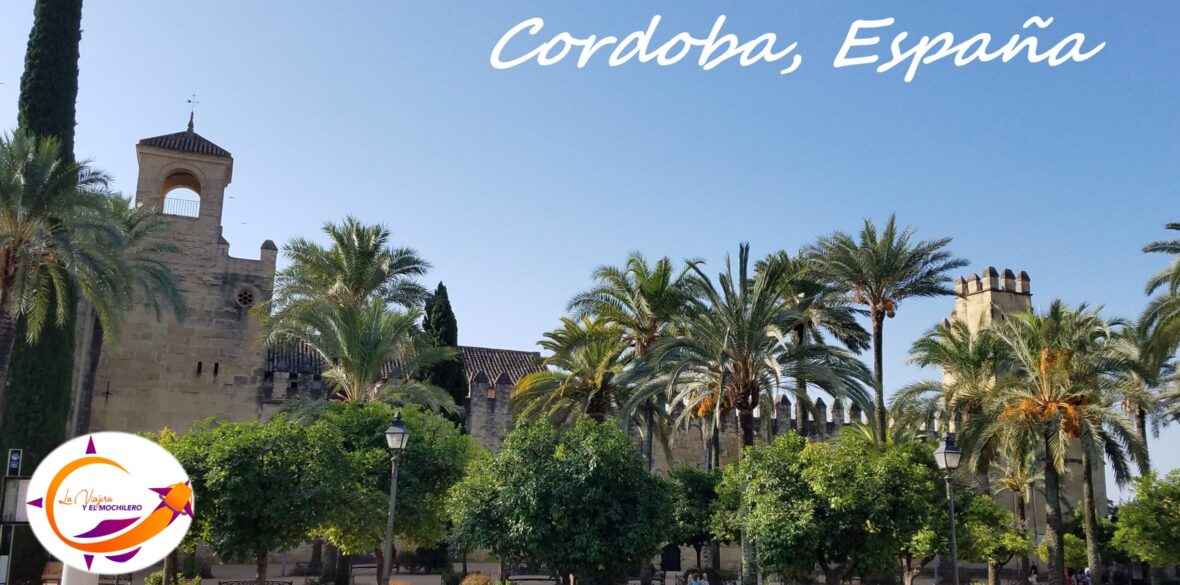The “Colonia Patricia Corduba” was the capital of the Baetica province under the Roman rule of “Hispania”. A city which allow Rome to be interlinked with the rest of the territory which is known today as Andalusia. The Ancient “Vía Augusta” was and still is today, the main road that interconnects the principal cities of the region. We used “Córdoba” as an exchange axis to visit Andalusia, with its easy access from Madrid and its connections to “Écija” and Granada by means of its transportation network of railroads and buses.
We arrived to “Córdoba” early Monday morning only to discover that most of the main monuments were closed. However, this would not discourage us to continue our trip and enjoy “Córdoba”. We encountered a wide diversity of tourists groups in the city; locals, orientals y Arabs. AS with many cities in Andalusia, “Córdoba” evidences the influences of the Romans, Jews and Moors.
We strolled down the “Vía Augusta” Avenue towards the “Parque o Paseo de las Margaritas” on route to the old quarters. We came across a very well conserved Roman mausoleum as we made our way to the “Puerta de Almodovar”.

This gateway to the old city replaced the ancient Moorish entry to the city in the 14th Century. We stopped nearby to have breakfast and enjoyed a famous Cordovan pastry, another testament to the excellent Spanish cuisine.

The Jewish Quarters enticed us to enter via the “Puerta de Almodovar”. We visited the “Casa Andalusi”, the “Casa de Sefarad” and stepped into the “Zoco” (Arab Markets). Therein, surrounded with fountains and interior gardens, we found craftsmen (and craftswomen) hard at work, selling their handmade goods.



We continued onward to the Royal Stables and Gardens located alongside the “Alcázar de los Reyes Cristianos”. Just over our shoulders we could glimpse the great Mosque, but we continued towards the “Guadalquivir” River and the ancient city walls on the river bank. A few steps away from the “Alcázar” we could see the Roman Bridge, which for over 20 centuries has been the connector of the “Campo de la Verdad” and Cathedral wards of the city. A true testimony to Roman Engineering with the respect of the diverse cultures that co-existed there. Across the Roman Bridge to the “Calahorra” Tower we went. From this side of the river, we enjoyed a splendid view of the old city and the towering Mosque which awaited us.


The closer we we got to the Mosque, the more imposing was this structure. Despite the many pictures we had seen of this Mosque prior to this visit, this is no comparison to what we encountered. We gained entry to an enormous interior garden which promised greater things to come. As we through one of the lateral doors, a long sigh of admiration overtook us as our hearts stopped beating in awe. We were struck dumb before this great marvel we visited for the first time. Verily, this was the Mosque – Cathedral of “Córdoba”! Our feet were inside what had been the largest Mosque in the world, second only to the Mosque of Mecca (in 1588, the Blue Mosque in Istanbul became the second largest). The Mosque – Cathedral of “Córdoba” was built over a Roman Basilica and constitutes a grand example of conservation and tribute to the Moorish culture as well as architecturally, these different cultures could co-exist and be so enriching.

If Toledo is known as the “City of the Three Cultures”, “Córdoba” should be the capital of all cultures. The ruins of a Roman Temple a few steps off the “Plaza de las Tendillas” is a silent witness to this. Further along we found the Royal Church of Saint Peter as we waked towards the “Plaza de los Capuchinos”, were we would find the “Cristo de los Faroles”.



Nightfall was upon us, but before returning to “Écija”, we also visited the “Malmuerte” Tower and the “Palacio de la Merced”. Once again on the “Vía Augusta” Avenue, we strolled through a park with countless fountains and cascading water which would tempt us to stop and refresh ourselves.

Good-bye “Córdoba”, a city full of great treasures.
Visit our Gallery of pictures in: Córdoba

